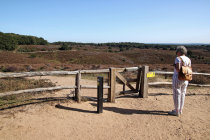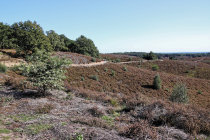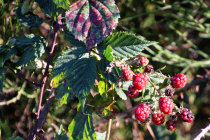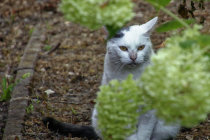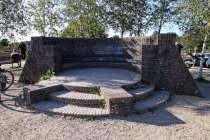In the Saale Glaciation (about 200.000 years ago), massive glaciers covered the lands north of the Rhine, including
what is now the Veluwe. Sediments at the glacier tongues were shoveled up, creating so-called push moraines. The hills and valleys
in the Nationaal Park Veluwezoom are silent remnants of those frigid days.
After the last ice age, the Veluwe became completely forested.
Human settlers chopped down the trees as fuel for iron furnaces and to create pasture land for cattle and sheep. The area turned
into vast heathlands, but in the Late Middle Ages overgrazing created ever larger sanddrifts.
In the 19th century the Veluwe
was reforested with pines for the timber industry. Manor houses situated in lush parks sprang up at the southern edge
near the split of the Rhine and Bissell.
In 1930 Veluwezoom became the country's first National Park. with the organization Natuurmonumenten as private owner and caretaker..
The hilly area around the Posbank features several scenic walking trails and is very popular among hikers.
We visited here in September 2020.


